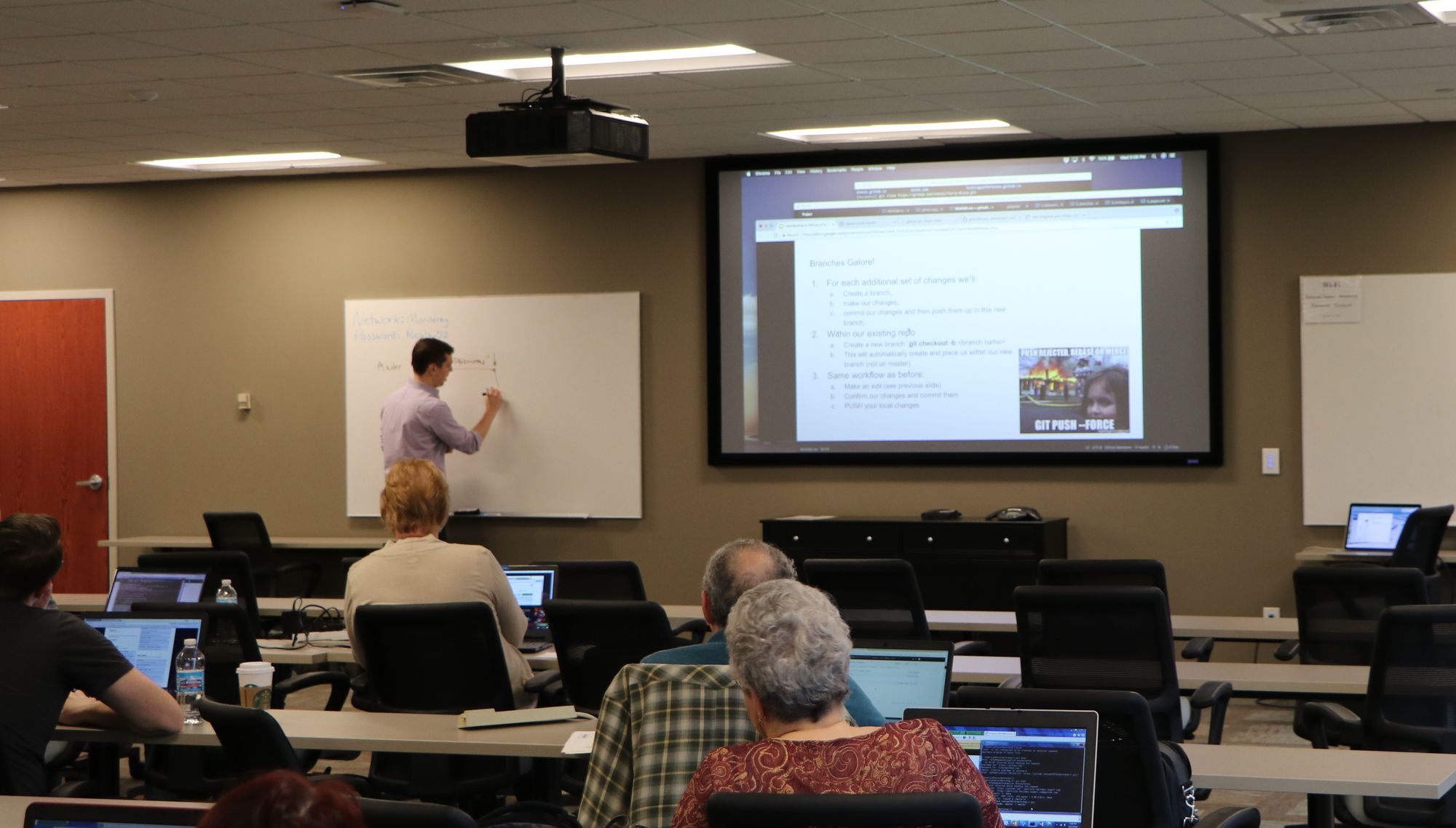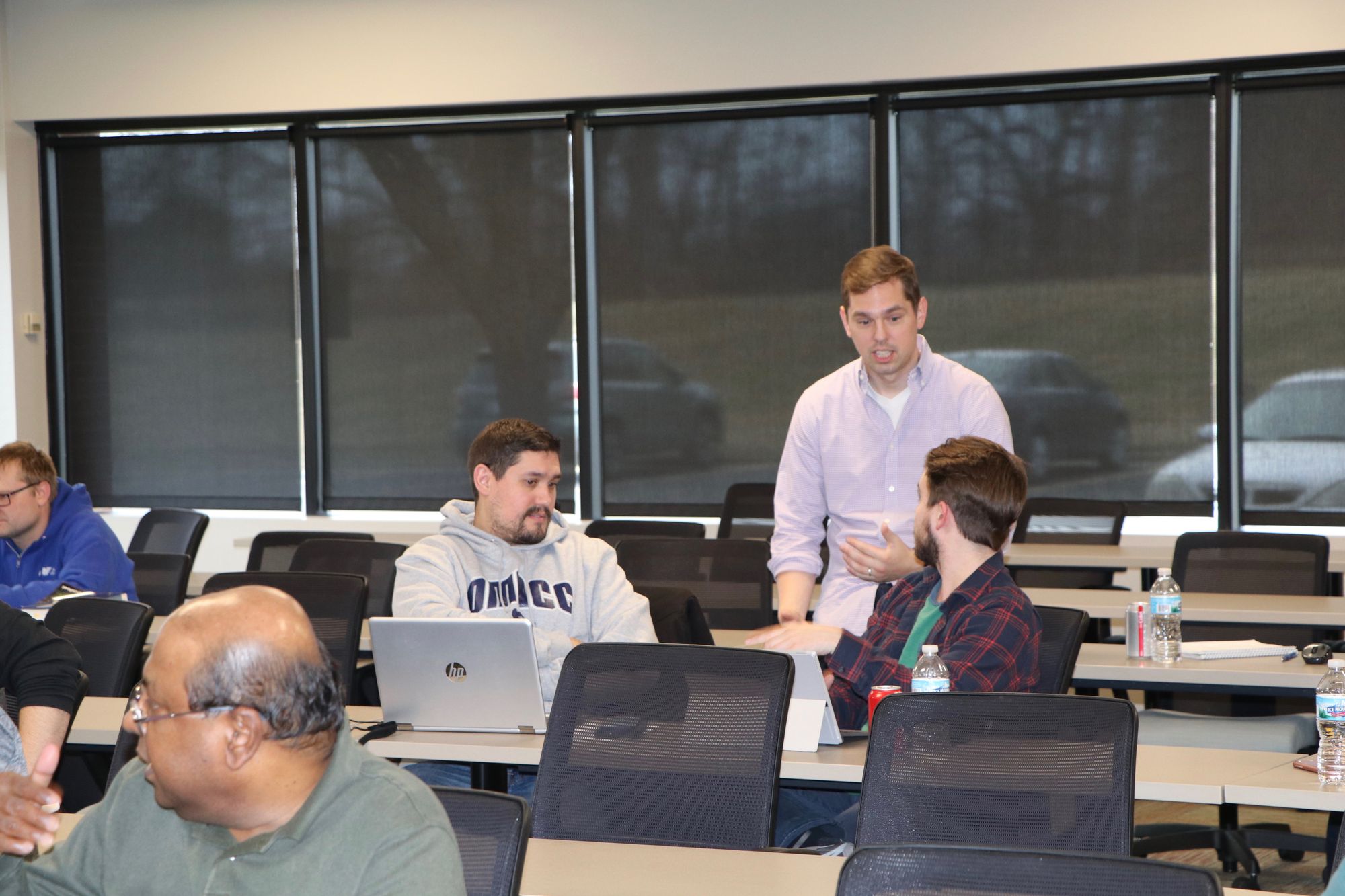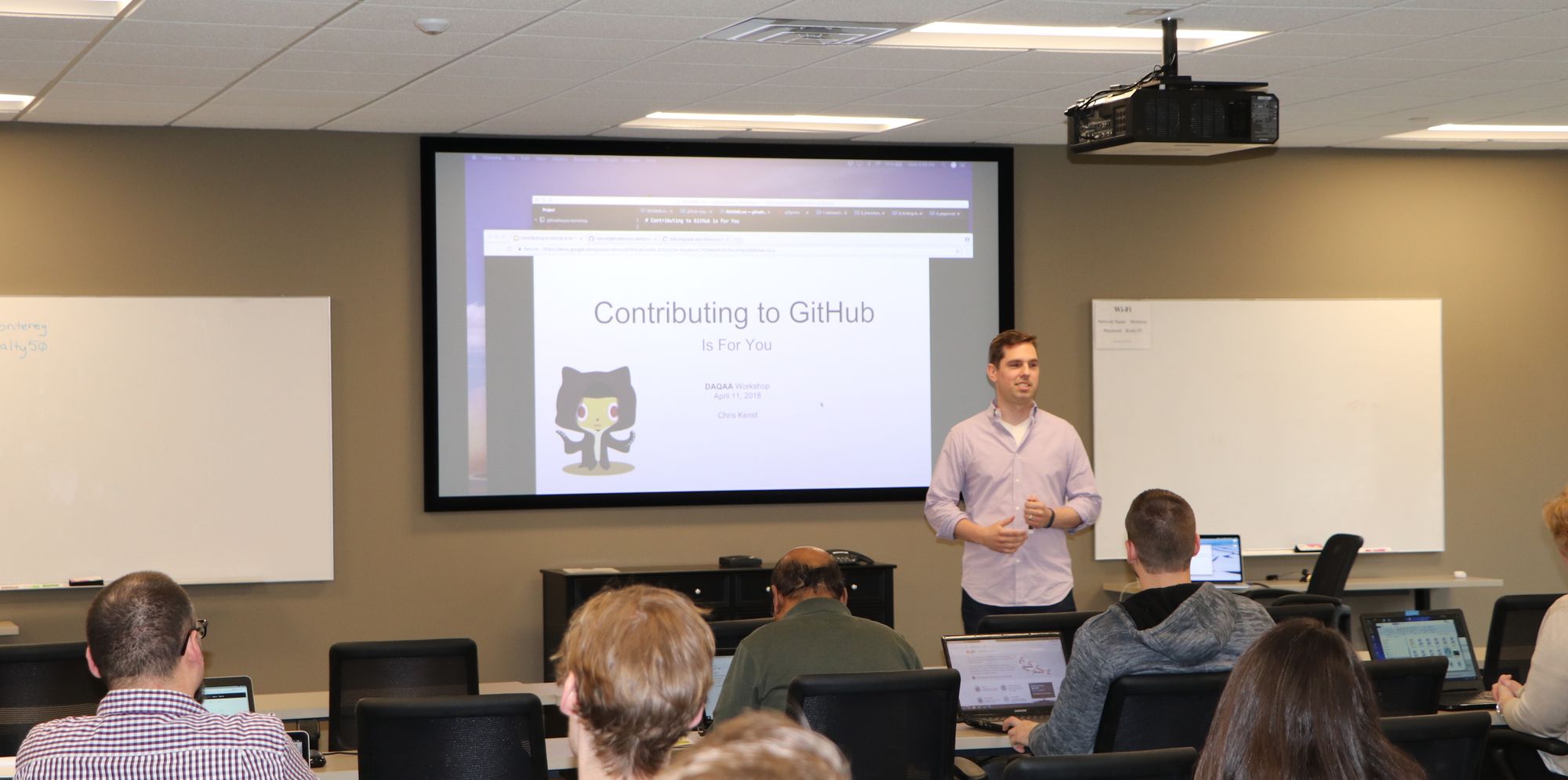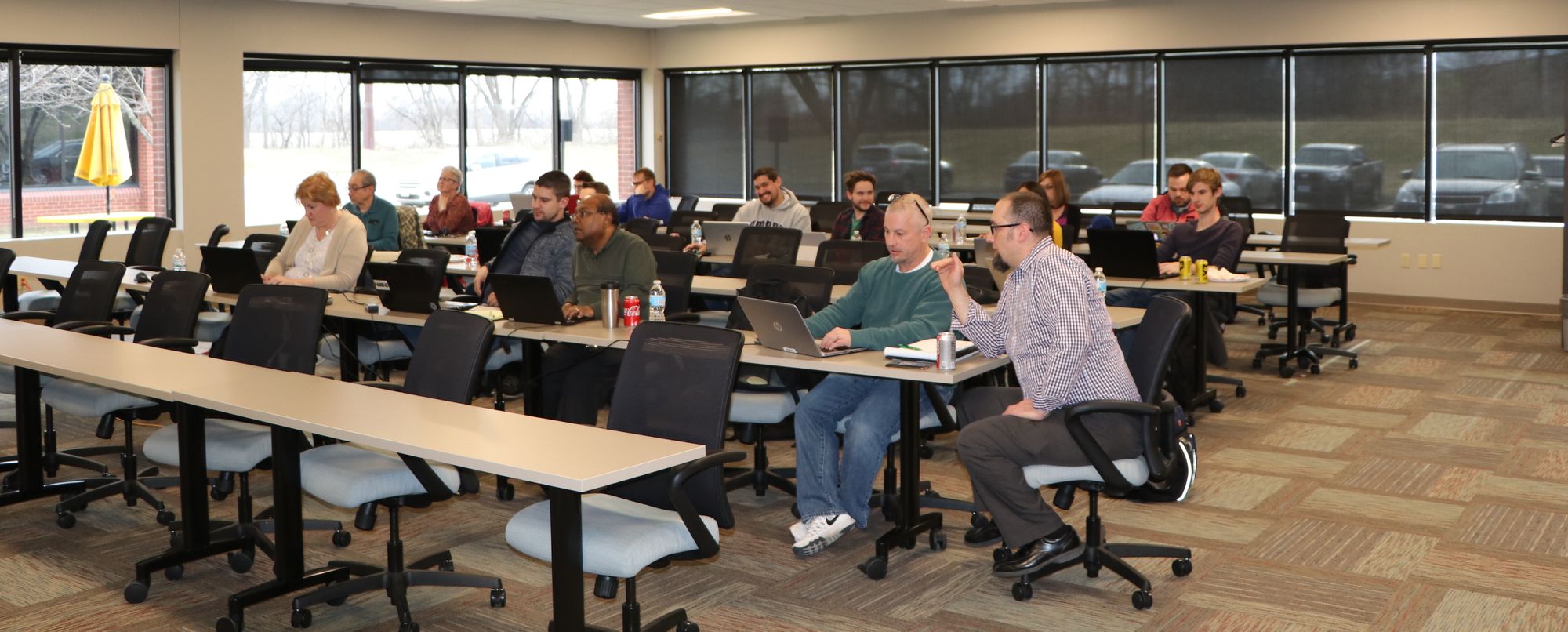Lessons Learned from the Contributing to GitHub is For You Workshop




On April 11, 2018 I gave a workshop called Contributing to GitHub is For You is For You (abbreviated as C2GI4U) in Des Moines, IA to the Des Monies Area Quality Assurance Association (abbrevitated as DAQAA). Roughly 36 people signed up for the DAQAA event meetup and of those about 22 showed up. Scheduled for 3 hours (including a break in the middle for food) I set out to cover a number of topics around using Git + GitHub including:
- Creating repositories
- Branching
- Submitting changes in Pull Requests
- Merging, reverting, cloning, forking, and other common commands, etc.
- Using git locally from the command line and GitHub remotely through the web
In a little less than 3 hours we were able to run through three quarters of the exercises, covered all of the basic git commands and many of the intricacies of using the Git + GitHub workflow. Everyone walked away knowing how to grab and contribute to a project in Github using Git in the command line. A few people were overwhelmed having to pick up terminal commands in addition to Git commands, but most were able to get through the exercises and commit jointly to the C2GI4U repository. By the end a few felt so empowered they were going to apply what they learned the next day at work. (This point made me feel quite well.)
Workshops (generally) are fun because we get to do hands-on technical things. They also bring up interesting challenges, some of which are expected and others not so much. For example I expected some people might have to learn to navigate the command line (or re-familiarize themselves). Although we split time between GitHub’s nice UI you can’t get away from the command line but with practice during the workshop many people became more comfortable. However there were a few things that I didn’t expect and hope to improve upon the next time:
- Provide a list of git commands we will use alongside the exercises. I had a list of all the git commands we were using as well as a list of exercises BUT they were in separate places.
- I included a few cheat sheets with a bunch of different git commands but these were too broad to teach from, especially for people brand new to git.
- Include information about storing GitHub up credentials. Although this wasn’t a big issue (you get a prompt to login) I always forget this step since my credentials are saved in my terminal. Everyone ran into this problem.
- Make sure people are aware of the location of their code. I was good about this up front, but I need to make it a part of the pre-requisities and slides. This is as simple as making sure you are in your Documents folder before cloning a repo.
- Branching can get quite complex. I’m also not sure how much of a challenge this was for people to understand and perhaps because of this how exactly to address this complexity except by going through exercises (I even drew a few diagrams on a whiteboard). Ideally I’d have more information / follow up references and maybe another diagram or two. I don’t think I explained Remote vs local branches as well as I could have.
- Not really an improvement but a general note of thanks: A few of the organizers from DAQAA had experience with git + GitHub and so I was happy to have had a few helpers roaming around. An unexpected but happy side effect was participants helping one another out which made my job that much easier.
The goal here was getting closer to the development workflow (like git + GitHub does) to help reduce the knowledge gap for testers, business analyst, other developers, etc. and help make them more comfortable with the technical aspects of software development. (There were a couple of attendees who were learning to program in Java and the course they were taking assumed they knew how to use Git + Github which they did not. This class helped them become more proficient.) Overall I think we achieved that goal.
More:
- C2GI4U GitHub repository – Has all exercises, links to slides, known issues, etc.
- Credit to Dusty Juhl for the photos above!
